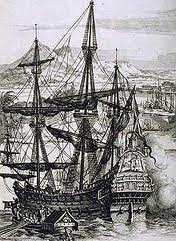 |
| flickr.com |
Juana Campos Pangelinan (sitting in front, with baby)
Saipan, early 1900s
The Pangelinans of the Marianas can trace their ancestry back to three soldiers in the Pampanga (Filipino) regiment on Guam in 1758. It is not known if these three Pangelinans were brothers or somehow related, but it does raise that possibility. There were no Pangelinans listed in the earlier, 1727 Census.
The three Pangelinan soldiers were :
Antonio Pangelinan - he married Petronia Arceo. Petronia is listed in the 1727 Census as the daughter of a Filipino soldier (Pampanga troops) named Andres Arceo. Andres was married to Juana Dama. We don't know who Juana Dama was, whether she was Chamorro (the sound of the name allows for this possibility) or not. But it is more probable is that Petronia was born on Guam.
Next comes Francisco de Borja Pangelinan. The "Borja" in his name should not be confused with the last name Borja. You can see my earlier post
paleric.blogspot.com/2011/05/familia-borja.html about the Borja family, but just remember that there was a saint with the last name Borja - Saint Francis Borgia (in the original Spanish, San Francisco de Borja, the patron of Rota's Songsong church) and Francisco de Borja was the full
first name of this Pangelinan. Francisco was married to Dominga de Leon Guerrero. Now Dominga is also listed in the 1727 Census as the daughter of a Spanish soldier (from Spain? Latin America? Philippines?) named Antonio de Leon Guerrero, married to Petronila de los Rios. Rios (meaning "rivers") is a Spanish surname and there were three men named Rios in the Spanish list of soldiers on Guam and she could be related to them, but we can't be sure.
But you can see in his case how a Filipino married a woman considered Spanish and their children are included in the Filipino list, yet they are mixed blood. In time, separating people on Guam into races was useless, because in time almost everyone, especially in Hagåtña, had a touch of the three main races : the pre-contact Chamorro, some Filipino and some Hispanic of some kind (whether "pure" Spaniard straight from Spain or from a Spanish colony, or Spanish mixed with other bloods : Indian from Central and South America, African and other).
Despite all this mixing, two things survived. First, the identity. Even people with mixed blood identified themselves as Chamorros. Second, the language, even though many indigenous words were dropped and forgotten and many loan words adopted. Still, a distinct language which neither Spaniard nor Filipino could understand fully until they learned it remained.
Finally there was Manuel Antonio Pangelinan, married to Maria Magdalena Taitiguan. She was almost certainly Chamorro. Many Chamorro names begin with
tai, meaning "without" or "lacking." Although lacking a final "g," the last part of her surname is very probably
tiguang which means "neighbor" or "fellow man." Spelling was very random and inconsistent in those days, even when a Spaniard was writing in Spanish, how much more in a language not their own like Chamorro. (See my earlier post about the difference between
tiguang and
tengguang.)
paleric.blogspot.com/2011/06/si-yuus-tiguang-mo.html
Manuel Antonio, in particular, had three sons (maybe more later on after the 1758 Census), and the Pangelinans married into other families and the mixing continued.
By 1897, the Pangelinans had became a numerous and widespread family. Some of the better known clans were :
MALI
The descendants of Pedro Torre Pangelinan and Nieves Mendiola Taitano (sister of the founder of the Kueto clan).
KOTLA
The descendants of Juan Flores Pangelinan and Maria Mendiola Borja.
This is a huge clan, with ties to the Bordallos, Carbullidos and other families.
"Kotla" could be the Chamorro pronunciation of the Spanish word
corlar when conjugated corla, which means to "put on gold varnish." Many Chamorro family nicknames are taken from Spanish words (Kueto, Charot, Budoki).
SAIPAN
One of the larger Saipan Pangelinan families are descendants of Lino Flores Pangelinan, born on Guam and supposed brother of Juan Flores Pangelinan (Kotla). He married Joaquina Campos, also of Guam. The couple moved to Saipan, bringing with them their children. They are linked to some of the Tenorio and Villagomez families in Saipan.
PANGELINAN -VS - PANGILINAN
We all know about a famous Filipino but long-time resident and businessman on Guam, Marciano V. Pangilinan, who married a Chamorro and whose children are Chamorro. People wonder about the slight difference in spelling.
Remember that the name Pangelinan came to the Marianas from three Filipino soldiers. The name is Filipino and probably has something to do with the FAN+WORD+AN formula I have explained in earlier posts. This formula means "place of" or "time of," as in the rainy season
fanuchånan (fan+uchan+an). Well, being from the same linguistic family, Filipino dialects also use the fan+word+an formula, but using "pan" instead of "fan." I have yet to come to the bottom of the question what does "pangelinan" mean but I'll bet my last two pennies it has something to do with "place of" or "time of."
For all it being a Filipino word, it was Spaniards who wrote it down, according to the way they heard it. For the Spaniard, the sound we would spell in English "he" or "hi" could be written either with "gi" or "ge." It made no difference to the Spaniard; they would both sound like "he" or "hi." So, sometimes the Spaniard spelled it Pangilinan, sometimes Pangelinan. Spaniards did the same with many other names (Sablan/Zablan, Rivera/Ribera) because many times two different letters give the same sound in Spanish, or the Latin American type of Spanish used by many Spanish-speaking people who came to Guam.
SOME WELL-KNOWN PANGELINANS
Senator Ben Pangelinan
of the Lino (Saipan) branch
Former Senator Toni Pangelinan Sanford
of the Kotla branch
Lou Pangelinan
former Chief of Staff of Governor Joseph Ada
and Director General of the Secretariat of the South Pacific Community
in New Caledonia

















































